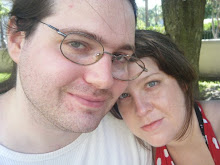The Directory of Popular Piety has the following to say about this day:
114. Popular piety has given rise to many pious exercises connected with 31 December. In many parts of the Western world the end of the civil year is celebrated on this day. This anniversary affords an opportunity for the faithful to reflect on "the mystery of time", which passes quickly and inexorably. Such should give rise to a dual feeling: of penance and sorrow for the sins committed during the year and for the lost occasions of grace; and of thanks to God for the graces and blessings He has given during the past year.
These sentiments have given rise to two pious exercises: prolonged exposition of the Blessed Sacrament, which afford an opportunity for the faithful and many religious communities for silent prayer; and the singing of the Te Deum as an act of community praise and thanksgiving to God for the graces received from Him as the year draws to a close(126).
Such a practice is occurring in St. Peter's in Rome, as may be seen at the Vatican Website. Here, a Booklet for the Celebration of Vespers with Exposition, Benediction, and the Te Deum may be seen. One will notice that Vespers begins as usual (though in this case processing to Tu es Petrus). After the Collect (Closing Prayer), the Blessed Sacrament is exposed, while the people may chant Ave Verum Corpus. After a some time of silent prayer, the Te Deum is sung. Then the Blessed Sacrament is incensed while the Tantum Ergo is sung. After the prayer, Benediction, reposition, and Divine Praises, an the seasonal Marian antiphon is sung (Alma Redemptoris Mater). At the conclusion, the hymn Adeste Fideles is sung.
Such a practice may be done in one's own parish or home. At the very least, one may recite the Te Deum. There is a plenary indulgence for reciting this hymn on the last day of the year. If one has a copy of the the Liturgy of the Hours, they may recite the office of Vespers (Evening Prayer), singing as much as there is music, and reciting the Te Deum after finishing Vespers. if you are near a Church where there is perpetual adoration, then you may certainly spend time in silent adoration there, and possibly even recite the Office of Vespers and Te Deum there. If you have the Mundelein Psalter, you could always sing as much of the Office as you can.
There are many musical settings of the Te Deum that are available. I tend to use the English version in the book By Flowing Waters. There are also a number of Latin versions that would be excellent, including that found in the Booklet Jubilate Deo, or even OCP's booklet Laus Tibi, Christe. All of these also have the traditional musical notation for the Alma Redemptoris Mater.
And of course, nothing prevents you from celebrating Adeste Fideles as the English "O Come, All Ye Faithful," or in its Latin version if you have one.
While it is probably too late to plan a celebration along the lines of that held in St. Peter's, we can always work toward doing so next year. You can always try to make such a work of devotion to God part of the life of your own parish. There are resources that can make a worthy celebration possible.





No comments:
Post a Comment